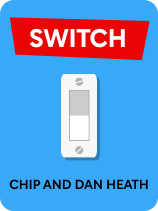

This article is an excerpt from the Shortform book guide to "Switch" by Chip and Dan Heath. Shortform has the world's best summaries and analyses of books you should be reading.
Like this article? Sign up for a free trial here .
What are action triggers? How can they help with habit formation?
We set up action triggers to prompt particular actions. For example, when you’re drinking your first cup of tea in the morning (trigger), you create your goals for the day (action). Setting up action triggers to prompt desirable behavior is foundational in forming habits.
Keep reading to learn how to use action triggers to facilitate habit formation.
Create Change-Supporting Habits
It’s not always possible to change your environment to fit your change—your cubicle at work might not have the space for a change-supporting revamp. In these cases, work on rebuilding your habits so that they trigger good behaviors instead.
When you make a habit of your desired behaviors, they become autopilot behaviors that you naturally fall back on to conserve rational energy—over time, they stop being a conscious effort and become an effortless reflex.
Action Triggers and Preloaded Responses
At the base of good habit-building are “action triggers.” These are the triggers we set up to prompt a certain action.
- For example, “When I leave work (trigger), I’ll go to the gym (action)” or, “Once I finish dinner (trigger), I’ll start my homework (action).
Using action triggers to prompt certain behaviors works well, but only under certain circumstances. They’re effective for actions you know you need to do, such as doing homework or finishing a project. On the other hand, they usually don’t work with things you don’t want to do—especially if they don’t need to be done.
- “After work, I’ll put together that IKEA bedroom set” isn’t an effective action trigger. Not only do you not want to do the action, but there also won’t be any serious consequences if you don’t.
However, when you combine action triggers with preloaded responses, you create powerful habits. A preloaded response is a reaction that you’ve thought through and practiced until it’s your reflexive response to a situation that calls for it.
- For example, you decide, “When I procrastinate on homework by scrolling through Instagram, I’ll block all social media for two hours.” You practice by always blocking social media for a few minutes before scrolling. Soon, it becomes a reflexive response.
Pairing action triggers with preloaded responses is effective because it prevents you from getting lost in possible solutions or pulled off track by your emotional side. You don’t need to decide how to act in response to an action trigger—you’ve practiced so many times, you already know what to do. You don’t needlessly tire out your rational side with deliberation and can focus your energy on getting the right thing done. In fact, research shows that using preloaded responses can increase your chances of achieving goals from 22% to 62%.
How to Create a Preloaded Response
While creating preloaded responses, it’s helpful to reframe your thoughts from “What is the right thing to do?” to “How can I get the right thing done when my action trigger happens?”
Your action triggers need to be specific and visible—otherwise, they won’t give a strong enough cue to trigger your preloaded response. For example, imagine that you’re trying to cut down on drinking. First, remind yourself what the right thing to do is—avoiding situations that will tempt you to drink. You identify the situations that usually trigger you to drink, and create preloaded responses to them.

———End of Preview———
Like what you just read? Read the rest of the world's best book summary and analysis of Chip and Dan Heath's "Switch" at Shortform .
Here's what you'll find in our full Switch summary :
- Why some changes succeed while others fail
- Actionable advice for creating changes that not only succeed but stick
- The three essential elements for successful change






